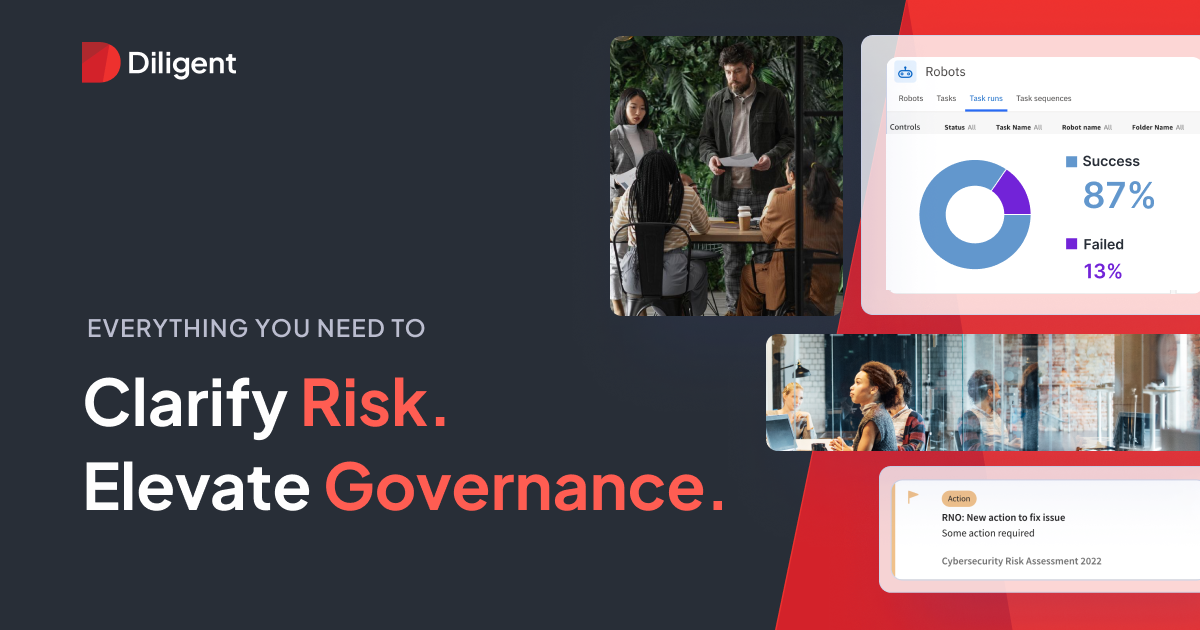
What is GRC? Governance, Risk, and Compliance Explained
Have you ever wondered how organizations ensure that they effectively manage risks, comply with regulations, and maintain strong governance? The answer lies in a system called Governance, Risk, and Compliance, or GRC. This integrated approach enables organizations to structure their risk management and regulatory compliance processes, ultimately improving business performance and enhancing decision-making within corporate governance boards.
The term GRC was coined by the OCEG (Open Compliance and Ethics Group) and formally defined in 2007 as “the integrated collection of capabilities that enable an organization to reliably achieve objectives, address uncertainty, and act with integrity.” Let’s delve into the three main components of GRC to understand its significance in today’s business landscape.
1) Governance
Governance forms the foundation of any successful organization. It involves aligning all activities and operations to support and advance the organization’s overall goals and objectives. Key decision-makers, such as board members and high-level executives, play a vital role in defining and enforcing governance activities. These activities encompass crucial aspects like board composition, corporate disclosure, and executive compensation.
Effective governance relies on data, information, and hard evidence to develop strategies and make informed decisions. Internal audits, assurance reports, compliance monitoring results, and risk assessments serve as valuable sources of information. With robust governance in place, organizations can stay on track and aligned with their defined objectives.
2) Risk Management and GRC Security
Risk management is a critical component of GRC, aimed at identifying, assessing, and controlling threats and risks faced by organizations. These risks can range from financial pitfalls and legal consequences to cybersecurity threats, commercial liabilities, and natural disasters. Both internal and external risks need to be diligently managed for a business to thrive in today’s complex landscape.
Risk management processes rely on internal audits and risk assessments to identify critical gaps and areas of significant uncertainty. Various individuals, including IT security leaders, business analysts, finance officers, and the governance board, are tasked with different aspects of risk management. A robust GRC framework ensures that all risk management activities align with the organization’s ultimate goals and objectives.
3) GRC Compliance: Ensuring Adherence to Laws and Regulations
In today’s highly regulated environment, compliance plays a crucial role in the success and sustainability of organizations. GRC compliance involves aligning organizational activities with the applicable laws and regulations governing them. These regulations can be legal mandates, such as privacy or environmental laws, or voluntarily established company policies and procedures.
For instance, a compliance officer at a software company ensures that their systems abide by regulations like GDPR, while an environmental inspector identifies and addresses environmental code violations at a construction site. GRC frameworks encourage organizations to centralize compliance monitoring and stay updated on any laws or regulations that might impact their processes.
Failing to comply with regulations can have severe financial, legal, and reputational consequences. Organizations may face hefty fines, spend valuable time and money in court, and experience irreversible damage to their reputation.
Building a Strong GRC Foundation for Business Success
GRC serves as a comprehensive framework that enables organizations to align governance, risk management, and compliance activities. By implementing a robust GRC strategy, businesses can mitigate risks, ensure adherence to regulations, and make informed decisions, leading to improved performance and long-term success.
If you’d like to learn more about the importance of GRC and how it can benefit your organization, visit Management, where we share expert insights and best practices to help you navigate the ever-changing business landscape. Don’t miss out on the juiciest secrets to achieving sustainable success!
Remember, when it comes to GRC, building a strong foundation is key. Embrace the power of governance, manage risks effectively, and comply with regulations to unlock your organization’s true potential. Let GRC be your guiding light on the path to success.
